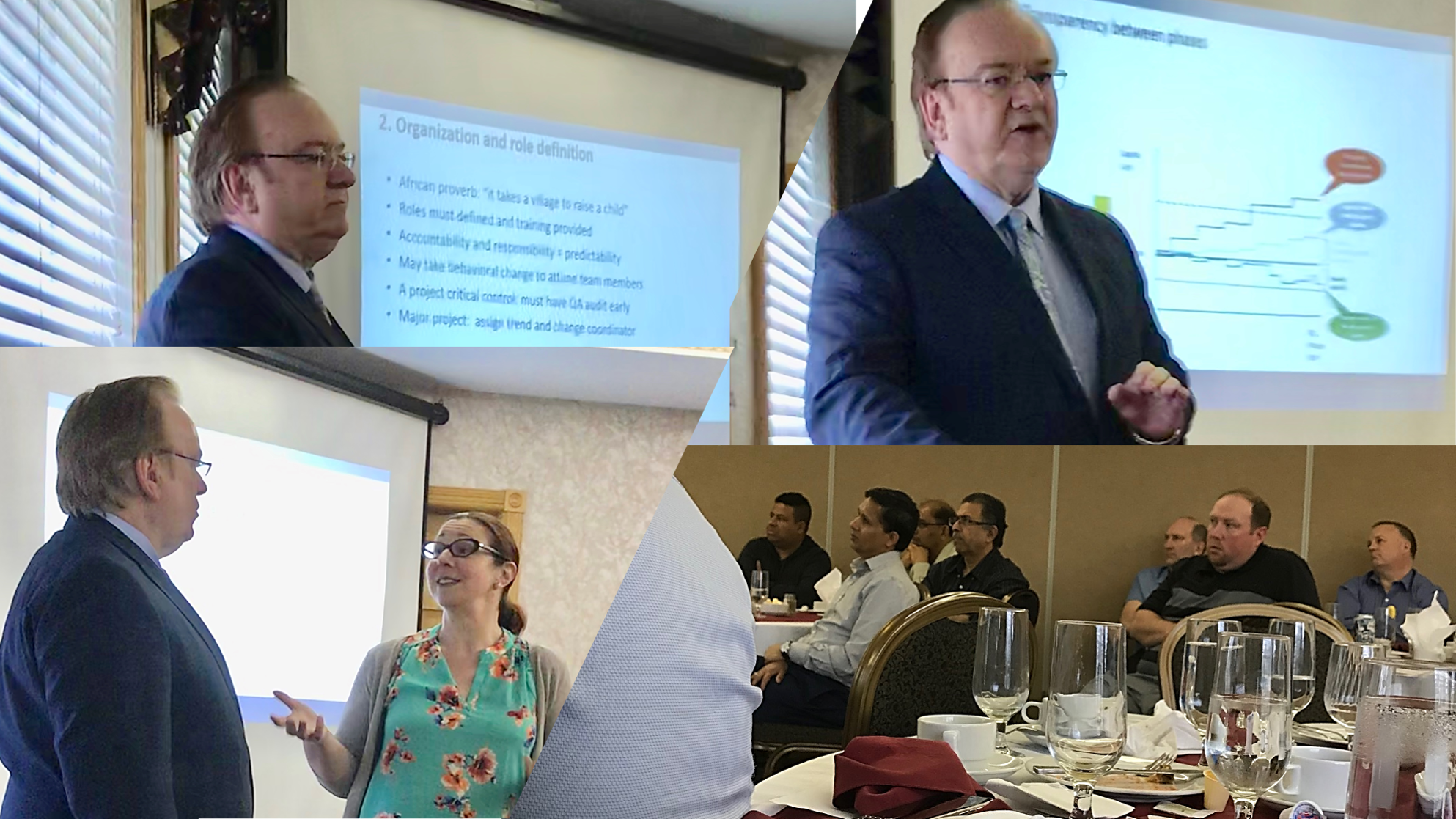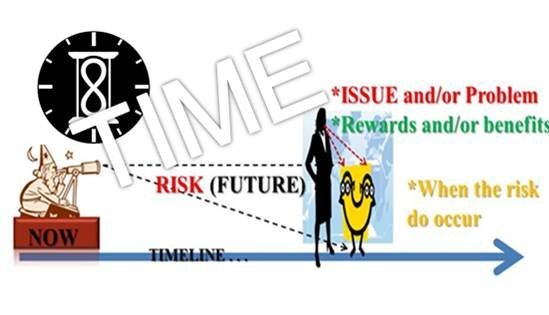
PM Solution Pro participated in the Bruce County AACE Dinner Meeting, “Proactive Trend and Change: Avoiding the Iceberg Effect.” It was held at the SureStay Plus Hotel by Best Western Kincardine, 791 Durham St, Kincardine, Ontario N2Z 1M4 yesterday, 5:30 to 8:30 pm.
The dinner meeting/presentation was hosted by AACE Bruce county section. Guest speaker Les McMullan, FAACE, is a global veteran of project controls and project management for more than 35 years. A graduate from McGill University, he has worked in most major industries including nuclear, pulp and paper, petrochemical, mining and metallurgy, energy and infrastructure. He discussed key critical controls for successful trend and change management, identifying fourteen (14) prime contributors to the ice-berg affect and how to overcome them. He was the past President of the Montreal Section for years and a Fellow of AACE International. He is the current Global Director of Project Controls at Hatch and the AACE VP – Regions North America.
The core message was that everyone involved in project management must identify changes and manage them. Trend and change management are critical controls for accurate forecasting and cost management. What are the challenges? 1) detection of change, 2) classification and timely evaluation from a cost, and 3) risk and schedule perspective throughout the project life-cycle. The project change register items may only be the tip of the iceberg. Unseen changes may be taking place in the project, only to surface later with major consequences. This is referred to as the iceberg effect as it may include hidden secondary impacts of change and other ripple effects (AACE Invitation, 2019).”
One principle that resonated with his audience during the event was an African proverb brought to fore on one of the slides that states, “It takes a village to raise a child.” We all know the truism in there. I definitely agree that the kind of teamwork in the organization, mutual supports, the member’s individual responsibility, and accountability all contributes to the final outcome of the endeavor. On this subject, one cannot help but think that changes in the teamwork dynamic is actually one of the better risk indicators of what’s going on in a project. This is most evident in a diverse work environment like North America and must be monitored closer.
A good understanding of “diversity risk” must be part of planning. The world’s industries are laden with so many cultures. Mixtures of these various norms creates a new norm that must be considered seriously. Each New mix will be different from the previous ones. As an example, if we look in the past, multiculturalism has a long and wide history in Canada. It was then adopted by the government during the 1970s and 1980s (Kobayashi, 1993) and (Duncan & Duncan, 1993). From that time onwards, various religious and cultural influences flourished in our society; from the family to the workplace and into the main building blocks of Canadian politics. They consist of people from a multitude of racial, religious, and cultural background. Multiculturalism was an open invitation to “cultural pluralism”, a state where smaller groups within a larger society maintain their unique cultural identities. It means that the values and practices of a distinct cultural group are accepted by the wider culture provided they do not violate any governing laws and values. Note that “cultural pluralism” is often confused with “multiculturalism”. Yes, the attributes are very similar except for one evident distinction-“multiculturalism lacks the requirement for a dominant culture (Wikipedia, 2013.Cultural Pluralism). People tends to approach and execute things differently in close affinity with their cultural backgrounds than what we want to imagine. That can be a big challenge! (Frago, R., (2017).Diversity Risk in Canadian Workplace/Planning Planet and Frago, R., (2015). Risk-based Management in the World of Threats and Opportunities: A Project Controls Perspective. ISBN 978-0-9947608-0-7 (Canada). Chapter 8.Section 8.1.page 157). Behavioral change that go against the grain of an embedded culture is the hardest to make.
Another aspect of last night’s presentation that sticks with me was when Les subtly touches the time component of risk. The relationship between risk and time is very dear to me and I want to emphasize it in this article. Time is an element of risk not given proper attribution and importance. If we really put our mind to it, the fact is, it is the one always in play yet seldom mentioned in its proper context.
Risk is about the future. Imagine that from “NOW” (the present) and the future state, there is a timeline. The time duration to the future has to have a value. Threat and Opportunity is about the future. There is no additional sense saying future risk. Saying so is redundancy.
Reliability of work data increases over time, and it signals the right time for full integration. Reliability is a result of data maturity. Good integration results in an effective risk-based project execution, the execution that makes most sense. While the acquisition of good quality information is always in progress, the risk specialist and each team member should strive to help the project manager identify and highlight critical elements needed for success. Always remember that risks must be identified before they can be managed. Risks cannot be identified if no information or indicator relating thereto exists. Unknown risks cannot be managed.
Please read my short dissertation on the subject (Frago, R. (2015).Risk as a Function of Time). Hopefully, it can give more clarity and direction to the readers. I know that the presentation provokes a lot of questions and ideas that we were not able to discuss as group. Suffice it to say, through the bullet points presented, the juice was definitely there in outline form. For me, as one of the attendees, they serve as good reminders. In view of this, I suggest reading the book “Plan to Schedule, Schedule to Plan/ISBN 978-0-9947608-2-1 (Canada).” This is designed for readers who are serious furthering one’s professional risk-based management perspective in the planning and scheduling knowledge areas of expertise.


